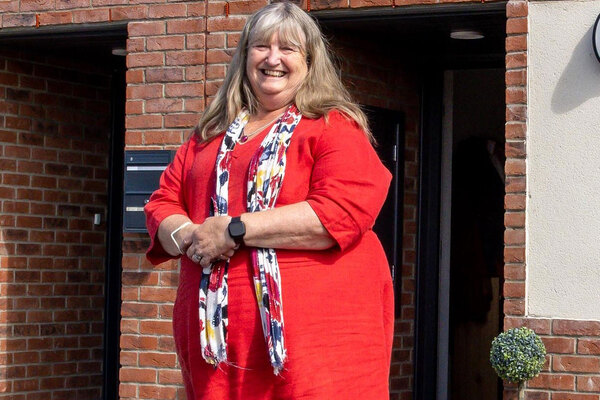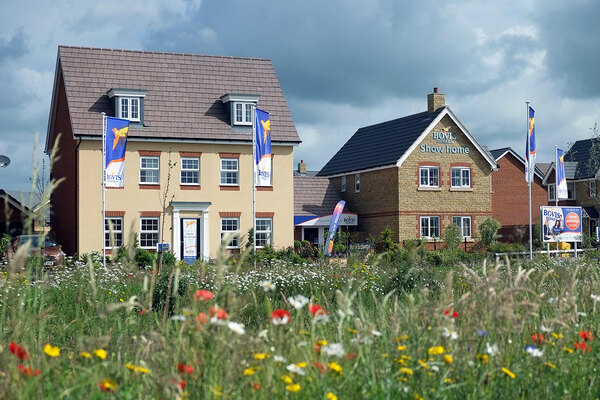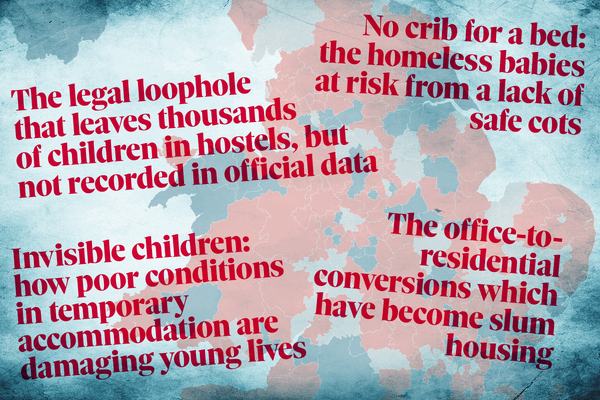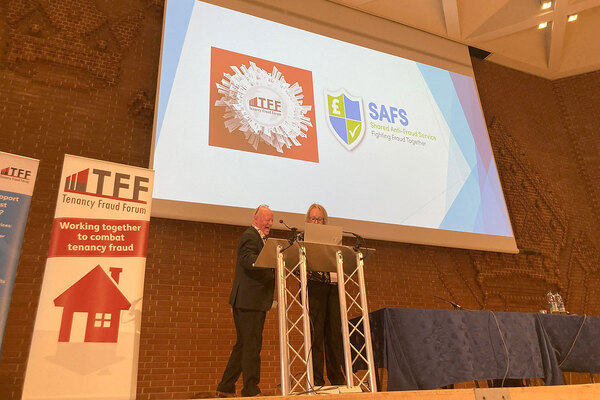You are viewing 1 of your 1 free articles
Demolish or retrofit: what does a battle over an estate in Glasgow tell us about housing’s big sustainability question?
The approval of one of Scotland’s biggest ever demolition projects has provoked a fierce debate about embodied carbon. Why are the facts so difficult to agree on? By James Riding
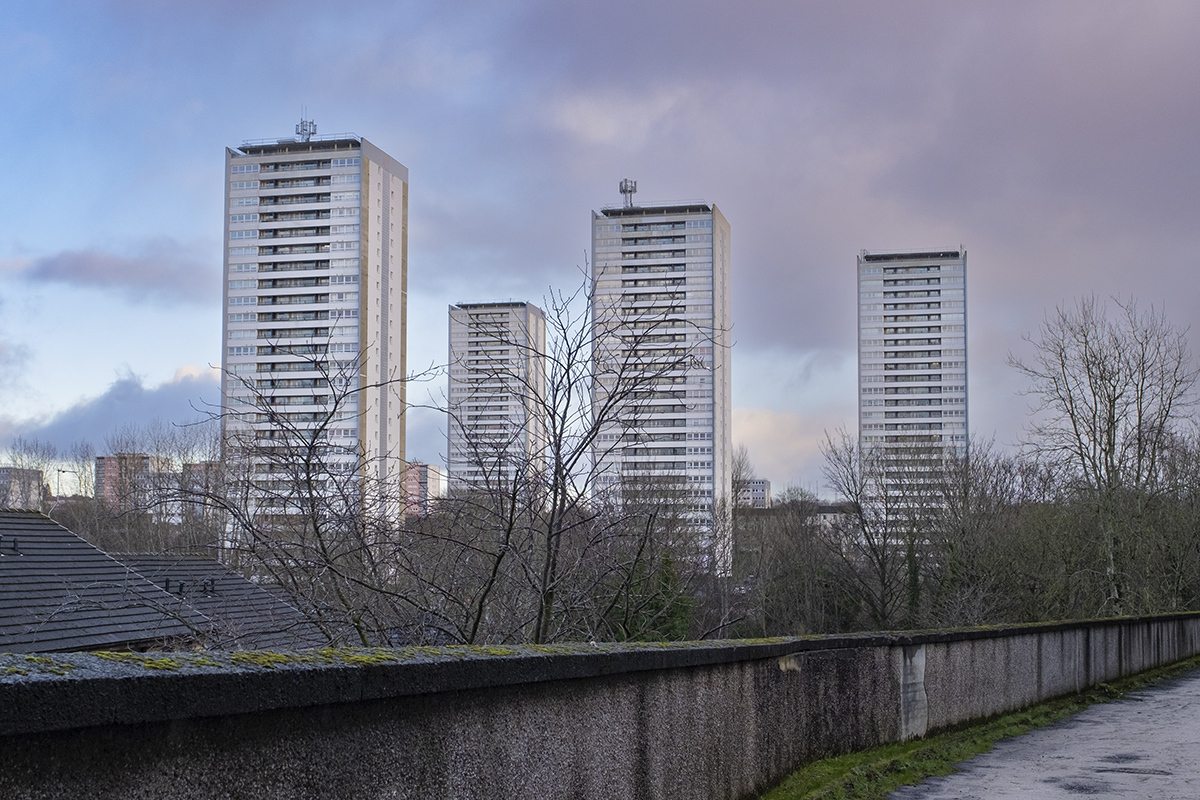
Wheatley Group’s plans for the 1960s Wyndford Estate in Glasgow have sparked a battle that has raged for more than two years.
Last month, Scotland’s largest housing association was told it could proceed with the demolition of the site’s four tallest tower blocks, comprising 600 bedrooms, and replace them with a similar number of bedrooms spread across 300 new low-rise homes – 255 of which will be for social rent.
But campaigners, including residents of the estate and architects Kate Macintosh, Alan Dunlop and Malcolm Fraser, have secured legal aid to pursue a judicial review. They argue that Glasgow City Council and the Scottish government did not ask for the environmental impact to be assessed as part of the demolition.
The battle over the Wyndford towers throws up big questions for developers and policymakers. Is it possible to have a regeneration business model that relies on demolition and rebuild in a world where reducing carbon emissions is paramount? Should environmental assessments be compulsory? How can we standardise data-gathering around embodied carbon? And when is retrofit simply no longer an option?
This debate has hit national headlines in recent weeks, with English housing secretary Michael Gove’s refusal to allow the demolition of the art deco Marks & Spencer building on Oxford Street in central London. But it is one that has been brewing in the context of ageing housing estates for many years.
The conundrum concerns two sources of carbon emissions: embodied and operational. Embodied carbon emissions are those created when building a home, including the production of the steel, concrete and other materials, as well as all the carbon emitted during construction. Embodied emissions tend to be very large – it is estimated that constructing a new home can produce 400kg of carbon per square metre.
“Having considered this approach, Glasgow City Council… agreed with the view of Wheatley Homes Glasgow Board [that] the blocks do not have a sustainable long-term future”
Operational emissions are those released over the building’s lifetime, primarily through the gas burned to keep it warm. A replacement home can have much lower emissions than an old home because it has higher energy efficiency, doesn’t use fossil fuels for heating, or both.
The demolition versus retrofit debate comes down to a trade-off between these two types of emission: is it better to expend carbon now, demolishing and rebuilding something to reduce carbon emissions over time by replacing it with something more efficient?
The trouble is that there is no unified agreement on how to measure these effects – which means disputes about what the true impact will be.
In Glasgow, the crux of the campaigners’ objections is that Glasgow City Council did not require Wheatley to submit an environmental impact assessment (EIA) for its demolition plans, as the potential environmental effects were “not sufficient” to warrant a full report.
A spokesperson wrote to campaigners in November 2022 saying Wheatley had commissioned a sustainability study that showed the extra carbon created by new build is “paid back in just 12 years” by the resulting reduction in carbon emissions compared to an existing multi-storey flat.
They added: “Having considered this approach, Glasgow City Council… agreed with the view of Wheatley Homes Glasgow board [that] the blocks do not have a sustainable long-term future.”
In January, a report commissioned by Wheatley from architect Dr Richard Atkins claimed “there is little or no basis on which to argue for the retention of the existing blocks on the grounds of either energy efficiency or CO2e emissions”.
However, Wyndford Residents Union (WRU) has challenged the landlord’s claim, commissioning its own carbon analysis from Aythan Lewes, a chartered surveyor at EALA Impacts.
“We can’t even deal with their carbon numbers because it’s done in a non-standard way,” he tells Inside Housing.
A professional statement by the Royal Institution of Chartered Surveyors (RICS) sets out the standard method for calculating whole-life carbon. But Dr Atkins’ report “isn’t based on [this] at all”, says Mr Lewes. He “missed huge chunks of the things that contribute towards the whole-life carbon of a building”, Mr Lewes adds.
The RICS method calculates that carbon is “sequestered” (stored) in the building during construction. Crucially, that carbon is then re-emitted at the end of the building’s life.
“The Atkins report has only accounted for one bit of that,” Mr Lewes says.
So why can’t Dr Atkins and Mr Lewes agree on their methodology?
Dan Jestico, director of the sustainable design team at Savills Earth, tells Inside Housing that “there are a whole range of different reasons why you may get different results” in whole-life carbon assessments.

For example, some studies only refer to upfront embodied carbon – the carbon it takes to prepare the site, to process the materials and bring them to site, and then build the building. “But that’s obviously not the end of the story,” he says.
There is also the embodied carbon needed to operate and manage the property, from refurbishment to maintenance. Then there are the operational carbon emissions. Finally, there is what happens at the end of the building’s life: demolition, repurposing, recycling.
“Depending on which of those life cycle stages you include in your analysis, you can obviously get different results, because you’re not comparing apples with apples,” says Mr Jestico.
Naturally, data improves as you progress with a project, so results can vary depending on how far along you are in the design process, as well as which software you are using.
“What the embodied and whole-life carbon industry is lacking is that government tick on the methodology. They’re not all assessed on a level playing field, at the same design stage, using the same life cycle modules and system boundaries”
Some assessments that factor in the operational emissions of a building may also make more enthusiastic assumptions about how quickly the electricity grid will decarbonise.
“What the embodied and whole-life carbon industry is lacking is that government tick on the methodology,” he says. “They’re not all assessed on a level playing field, at the same design stage, using the same life cycle modules and system boundaries.”
In Scotland, no hard laws on embodied carbon in residential buildings are in place yet. The Scottish Futures Trust has published a net zero buildings standard for public sector projects that lists embodied carbon as a key objective – but this is a voluntary standard.
In England, there has not been a policy on embodied carbon since the Code for Sustainable Homes was scrapped by the UK government in 2015. That document had a section on the environmental impact of materials.
There is a push within the construction industry to refine the assessment process and get clarity so that everyone can use the same methodology. Approved Document Z, a proposed section of building regulations that encompasses the measurement of embodied carbon, was put forward by Conservative MP Jerome Mayhew in November 2022 in a private members’ bill. But the government refused to support it, on the grounds that it could hurt small house builders.
The WRU has proposed a retrofit of the towers that involves knocking through walls of the smaller flats to turn them into family homes. “These buildings will last forever if they’re looked after,” says Pam Yule from WRU. “They’re really strong.”
In 2021 Wheatley commissioned a study from engineers AJ Balfour which concluded that cutting through the walls would “compromis[e] the structural integrity and stability” of the blocks.
Kate Macintosh, a retired architect supporting the campaigners, points to another Glasgow regeneration project, Queens Cross, as an example of how things could be done differently.
“There are three slab blocks, which they were proposing to demolish. But they carried out a genuine consultation with the residents and the overwhelming majority valued staying there,” she says.
Queens Cross Housing Association reversed track and reclad the blocks without decanting any of the residents. The result was an 80% reduction in carbon emissions, according to the architects who carried out the work. “The same could be achieved [at Wyndford],” says Ms Macintosh.
As part of the campaigners’ analysis, Mr Lewes calculated that the Wyndford towers represent at least 47,000 tonnes of embodied carbon.
He accepts that this is “a fairly rough calculation”, given the lack of information about how carbon-intensive construction was in the 1960s. But he says it is based on a figure from LETI, which is “an industry-recognised body”.
Dr Atkins wrote in a letter responding to Mr Lewes’ analysis: “The emissions associated with the original construction of the Wyndford flats have already happened. They cannot be retrieved and given the materials used in construction, they are not ‘embodied’ in the sense that they will be released through demolition.”
Many experts agree. A paper published by University College London about the impact of demolition explains that, as Dr Atkins suggests, most additional embodied carbon comes from building the replacement. However, it points out that energy is still used to demolish a building, then remove, process and dispose of the waste, while CO2 may also be released through associated chemical processes.
“There are three slab blocks, which they were proposing to demolish. But they carried out a genuine consultation with the residents and the overwhelming majority valued staying there”
Dr Atkins added that both the Wheatley proposal and the campaigners’ retrofit proposal would require the flats to be “decanted, stripped back to their structural elements, altered, and then refitted with new services, fittings and fixtures”. He said that consequently, the “historic CO2e emissions associated with the original fit-out are therefore accepted by both schemes as having been exhausted”.
“We don’t say that [Wheatley’s regeneration plan] is a million times worse,” says Mr Lewes. Retrofitting these towers will also emit carbon. Nevertheless, “there is more carbon emitted in demolition and new build,” he says.
For Mr Jestico, “it’s not just about the lowest carbon solution”. He says there are other questions that must be considered. “Are there other uses being brought into the scheme? Is it giving something more in terms of social value? Is it giving more in terms of placemaking, public realm, landscaping, biodiversity?”
There is also the question of cost. Some believe the cost of bringing older buildings up to standard can be prohibitive, making demolition a more cost-effective route. Mr Lewes thinks this is short-sighted.
“If you look at whole-life cost,” he says, “retain and retrofit over 60 to 120 years completely wins over a cycle of demolish and rebuild every 50 to 60 years.”
This, however, poses a significant challenge to the housing associations. It implies a complete rethink of their business model, the timescales on which they operate and the way they view regeneration projects. Can it be done?
“We do need paradigm change,” says Mr Lewes. “And the social housing providers have the abilities and have position to actually be a motor, to turn the paradigm across the sector.”
Sign up for our Scotland newsletter
Already have an account? Click here to manage your newsletters





